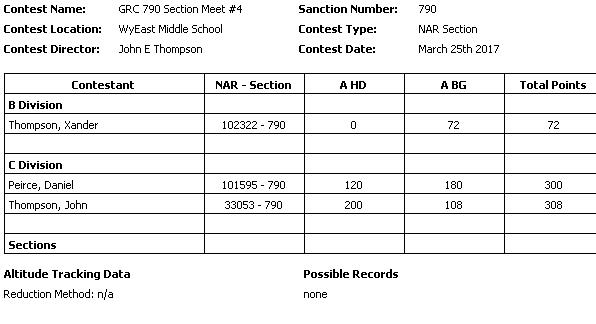I have been curious about model rocket piston launchers and found a few things that explain it quite well.
this video from Apogee is quite helpful
Rocketry is a fun and educational hobby!
I have been curious about model rocket piston launchers and found a few things that explain it quite well.
this video from Apogee is quite helpful
The Maxi Icarus Rocket was a two stage rocket. It was boosted with an Estes D12-0 to a C11-7. The Booster failed but was still able to ignite the upper stage to a successful liftoff and safe landing. The booster section was repaired and ready for another launch.












Here is a slow motion video clip:
Well Saturday was the only good day of the weekend for rocket launching. There were three contestants for the Section meet contest. Each one had one good flight and another one that was not as good. None the less it was fun and everyone knows how to do better the next time. All flights returned safely.
Daniel Peirce had one good flight with his boost glide rocket. It achieved a time of 46 seconds on his second flight. Xander had one great boost glide flight with his boost glider that achieved 24 seconds on the first flight. I had one good flight with my boost glider of 31 seconds on the first flight. I was hoping for another great boost on the second flight, but that did not occur.
Daniel achieved first place in the boost Glider event. Xander achieved 1st in the B division.
The Helicopter recovery was a more challenging event. Daniel Peirce entered the Rose-A-Roc helicopter recovery rocket and had mixed results. I entered in a kit that I had built from a company called CMR (Competition Model Rockets) that was famous for a few of its boost gliders in the 80s.
There will be more events and I hope more will come out to attend.
Here are the overall results of the Saturday Contest:
B Division: 1st Place Xander Thompson with 72 points
C Division: 1st John Thompson with 308 points
2nd Daniel Peirce with 300 points




Space Quiz
By Jeff Gorham
Ascent from Midgard
Vikings Rocketry Society newsletter 1988
Check your knowledge of the Real Thing!
Try your hand at this quiz. For the answers, email me at Thompsonje@gmail.com
Space Probes, the unmanned space program:
Women in Space. There has been much written about the “man in space” program, but what about the women? Here are some equal opportunity questions to test your knowledge of female space travelers.
Miss Baker rode a Jupiter nosecone with a rhesus monkey named Able. What kind of animal was Miss Baker? What happened to her afterward?
Easy Joke Question Designed to Raise Your Score:
CG gives a great presentation of modular designs for rocketry:
Here is Part 2 on modular designs:
This was a great presentation on Helicopter contest concepts by Chris Flannigan:
Doug Frost Flex Wing Glider competition design: